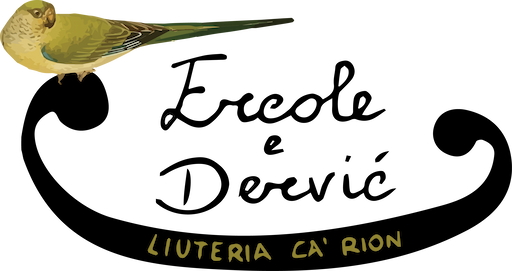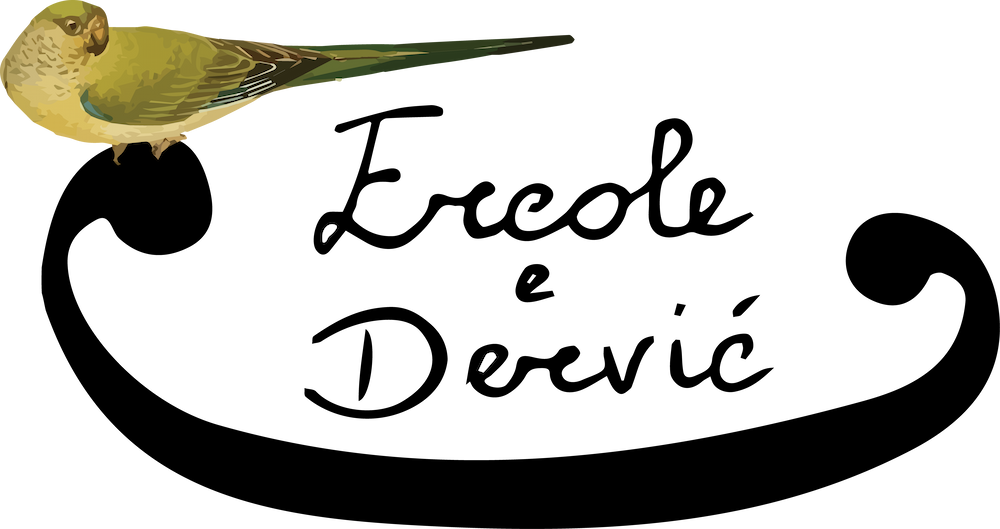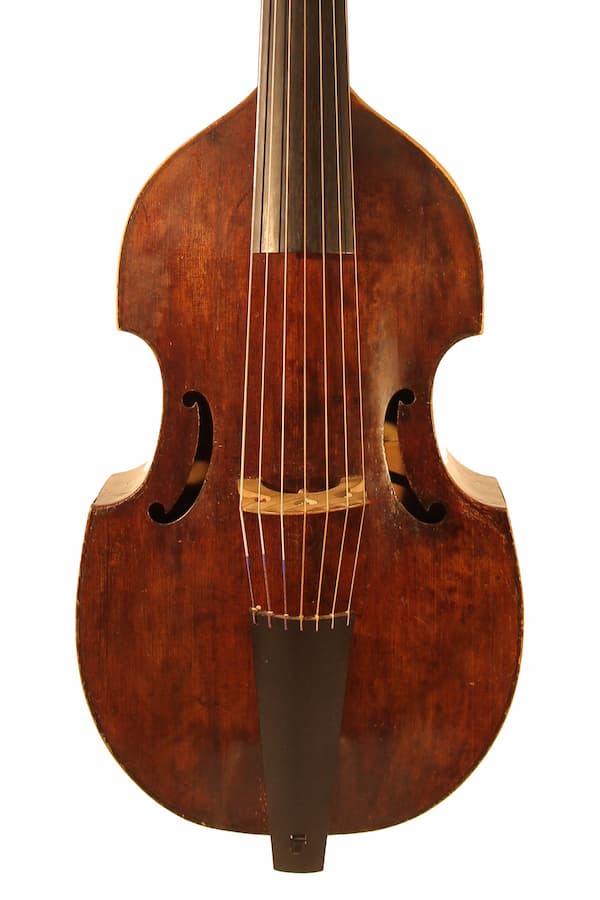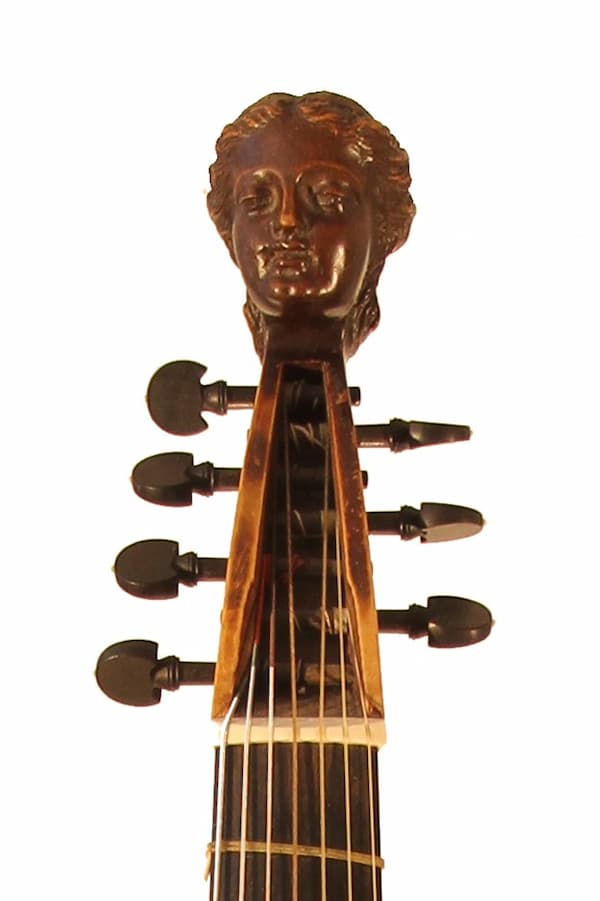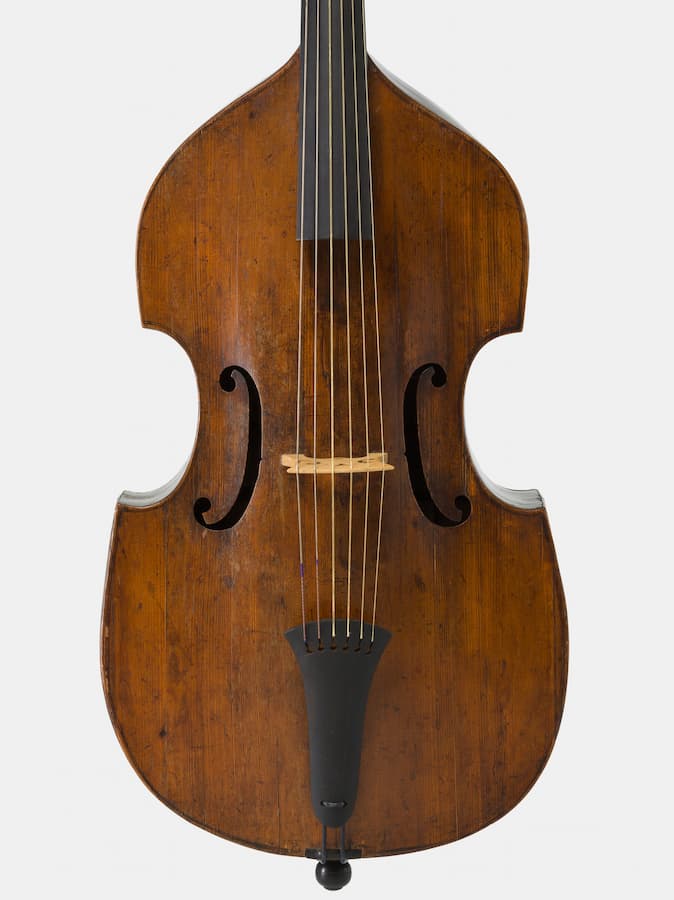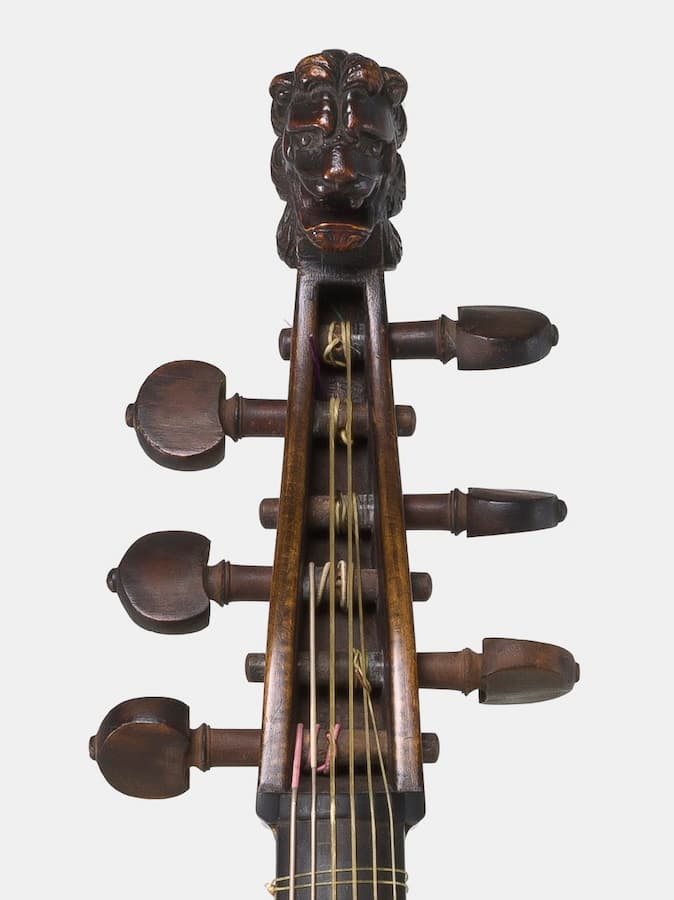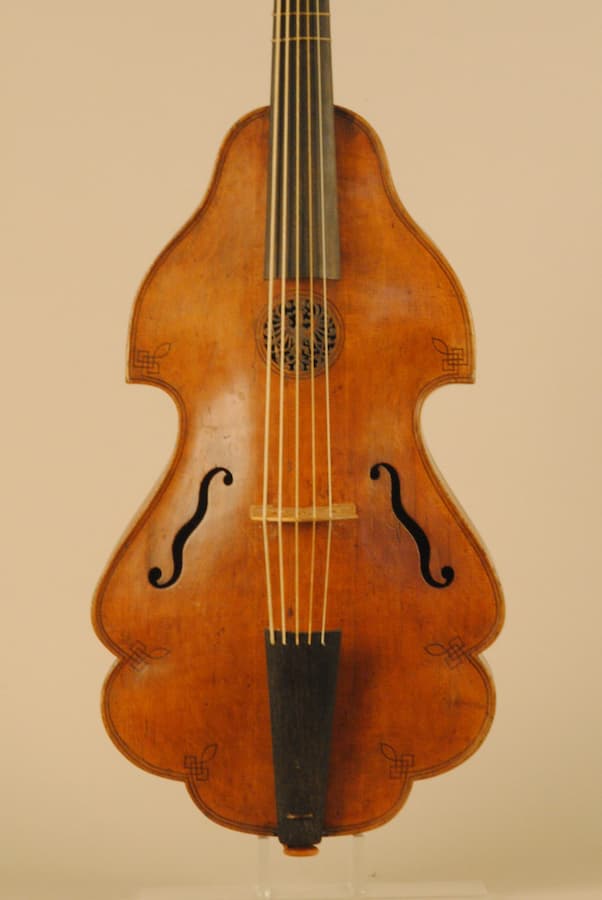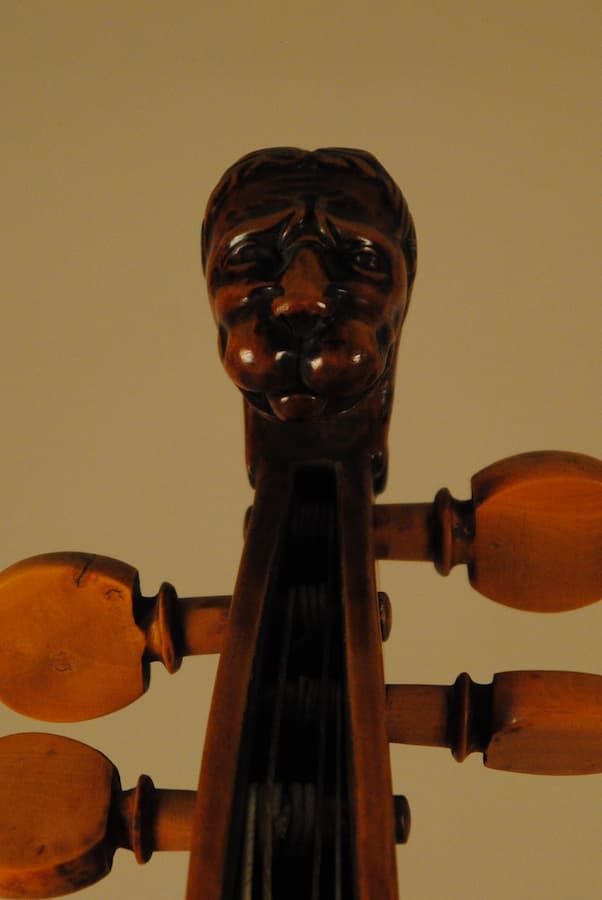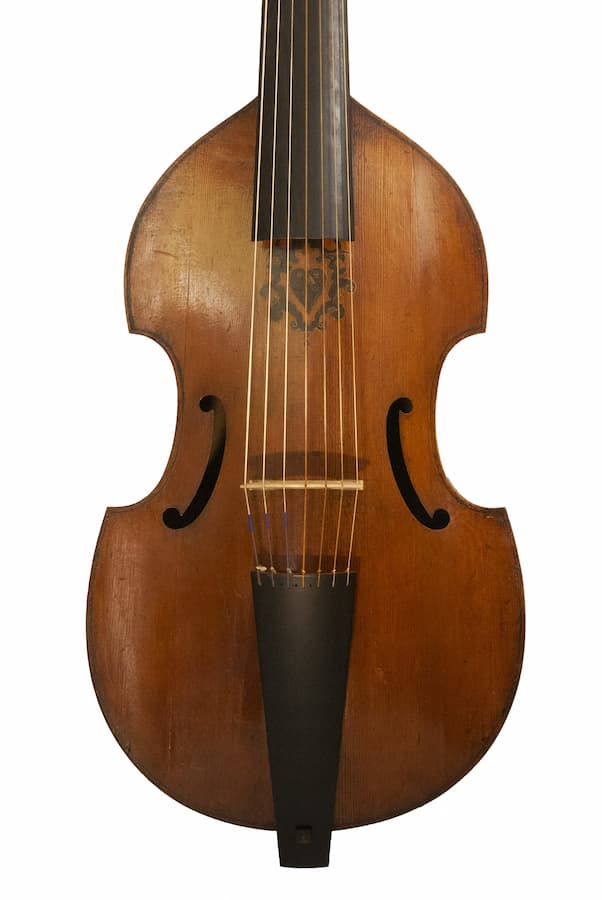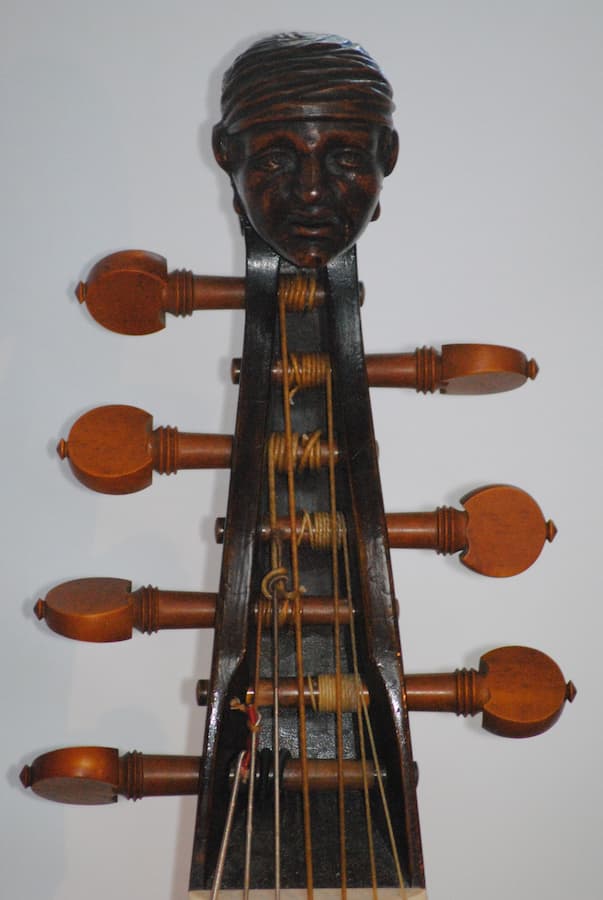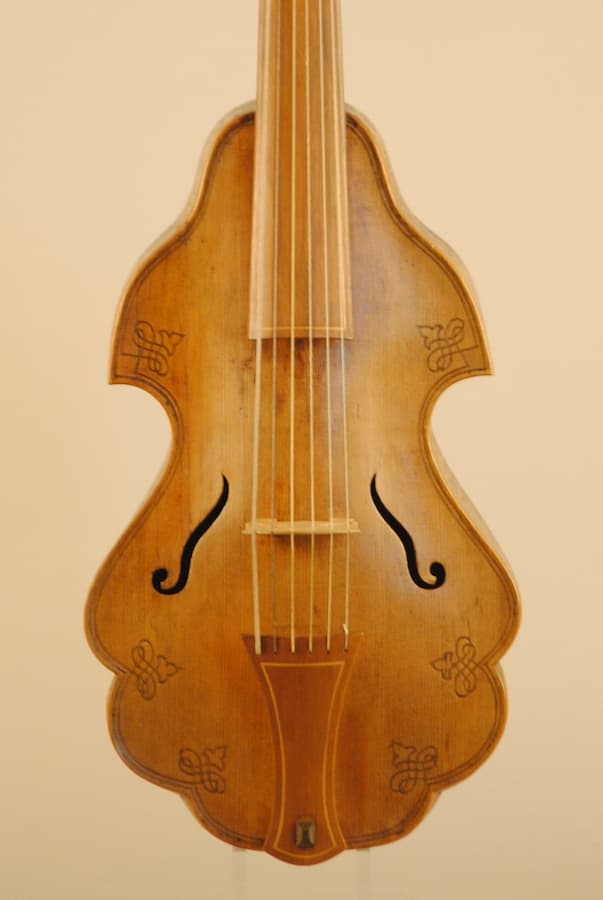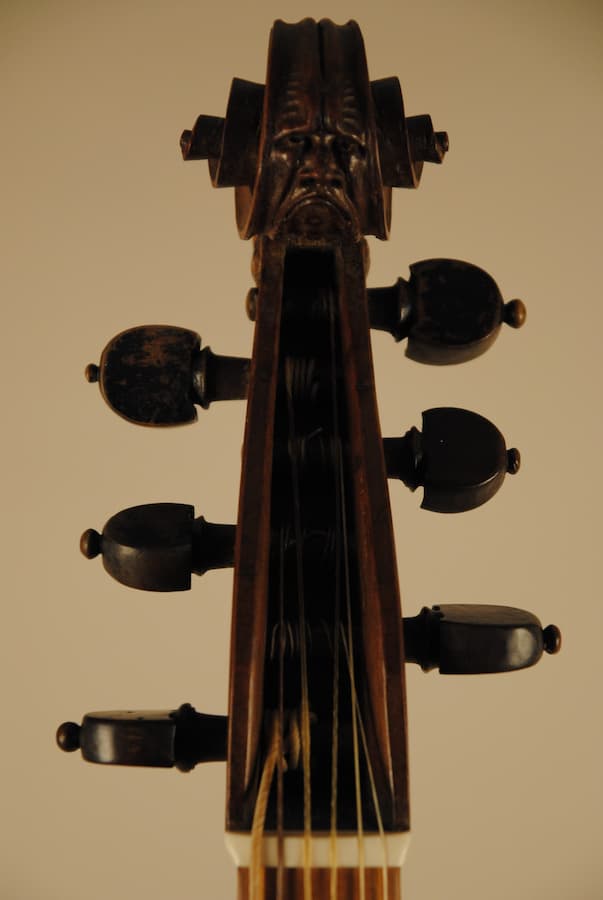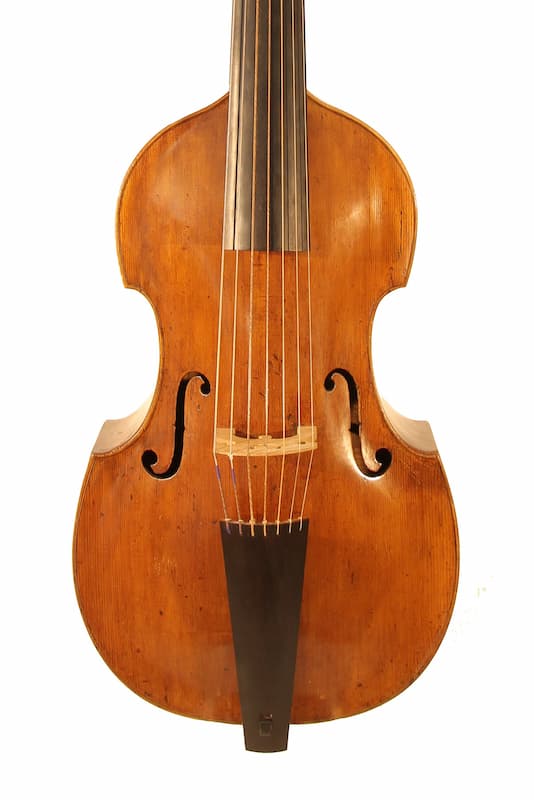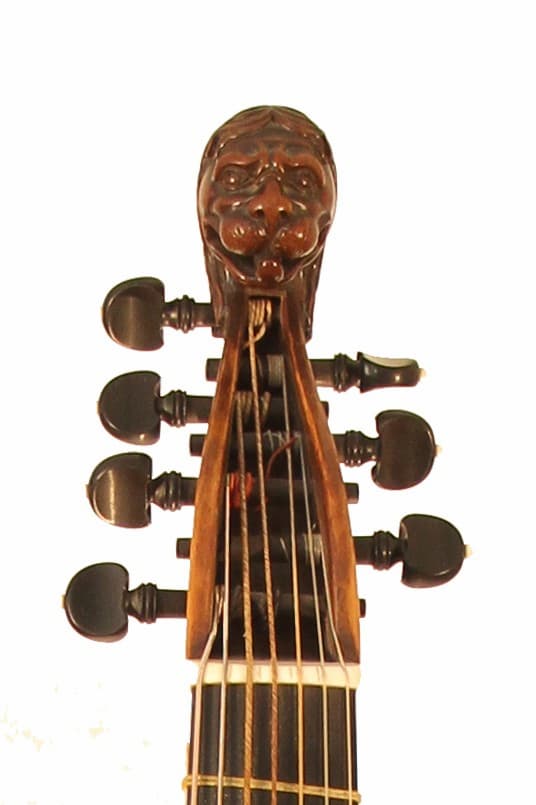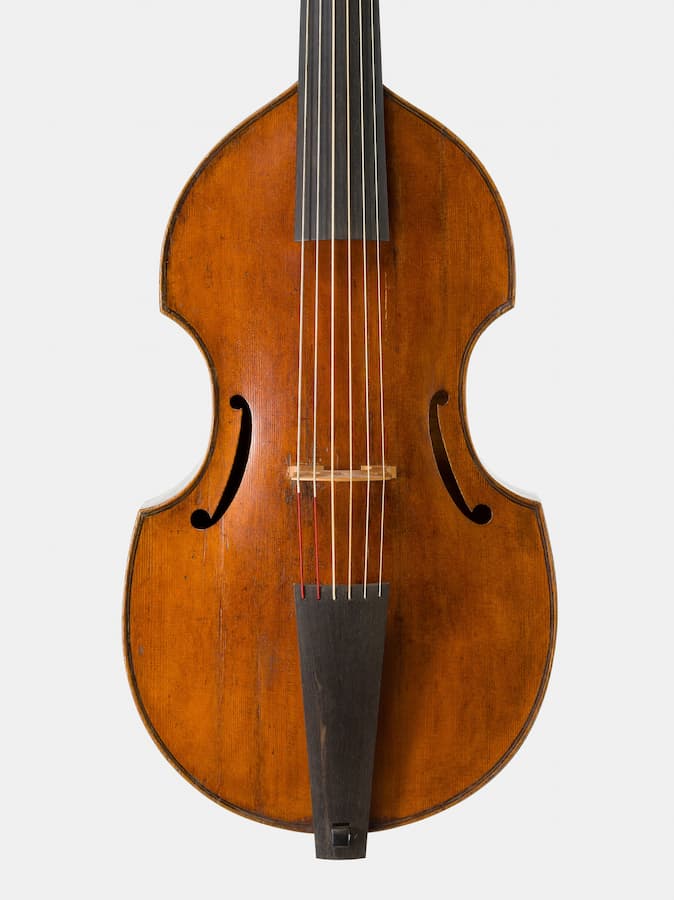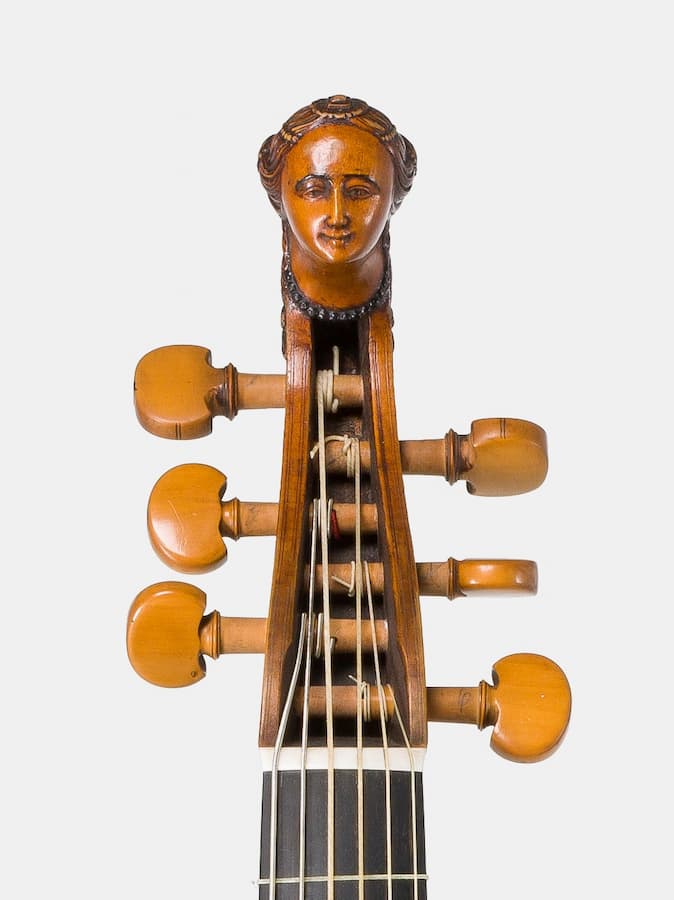







NICOLAS BERTRAND (1699)
Maker: Nicolas Bertrand
Year: 1699
Body lenght: 737 mm
String Lenght: 725 mm
Property: Private collection
Comment:
This instrument truly carries the marks of the centuries passed through it.
It was heavily and structurally modified in the upper part of the body and the big sculpted head isn’t original (even if historical).
In the last years a big restoration work was done reconditioning the upper part and the neck to the original states, keeping the head.
The instrument is regularly used and played.
NICOLAS BERTRAND (1699)
Maker: Nicolas Bertrand
Year: 1699
Body lenght: 737 mm
String Lenght: 725 mm
Property: Private collection
Comment:
This instrument truly carries the marks of the centuries passed through it.
It was heavily and structurally modified in the upper part of the body and the big sculpted head isn’t original (even if historical).
In the last years a big restoration work was done reconditioning the upper part and the neck to the original states, keeping the head.
The instrument is regularly used and played.








RICHARD BLUNT (1591)
Maker: Richard Blunt
Year: 1591
Body lenght: 722 mm
String Lenght: 690 mm
Property: Museum
Comment:
An instrument of incredible beauty and historical value.
Sides and Back are unfortunately very cracked and the restoration work made on it was a bit invasive in our opinion: a thick fabric, probably linen, is glued basically on the whole inside surface, covering almost everything on the inside.
Despite that, the instrument is a very good example of early english viol. The soundboard probably not original but the back, sides and neck probably are. The back is made of dark fruitwood, possibly plum.
RICHARD BLUNT (1591)
Maker: Richard Blunt
Year: 1591
Body lenght: 722 mm
String Lenght: 690 mm
Property: Museum
Comment:
An instrument of incredible beauty and historical value.
Sides and Back are unfortunately very cracked and the restoration work made on it was a bit invasive in our opinion: a thick fabric, probably linen, is glued basically on the whole inside surface, covering almost everything on the inside.
Despite that, the instrument is a very good example of early english viol. The soundboard probably not original but the back, sides and neck probably are. The back is made of dark fruitwood, possibly plum.








ERNST BUSCH (1630 – 1641)
Maker: Ernst Busch
Year: 1630-1641
Body lenght: 625 mm
String Lenght: 634 mm
Property: Museum
Comment:
This was the first festooned instrument we saw. The body and the decorations are masterfully made and the instrument is overall in very good shape.
Unfortunately the restoration work made during the centuries changed the inside structure of the instrument addig the corner blocks, a very big upper block and a big soundpost plate. Also a new bass bar was made and the neck was replaced in 1780 (there is an internal label stating this) so the head is not original aswell. In the copy we made we tried to restore the original structure, string lenght and head of the instrument.
ERNST BUSCH (1630 – 1641)
Maker: Ernst Busch
Year: 1630-1641
Body lenght: 625 mm
String Lenght: 634 mm
Property: Museum
Comment:
This was the first festooned instrument we saw. The body and the decorations are masterfully made and the instrument is overall in very good shape.
Unfortunately the restoration work made during the centuries changed the inside structure of the instrument addig the corner blocks, a very big upper block and a big soundpost plate. Also a new bass bar was made and the neck was replaced in 1780 (there is an internal label stating this) so the head is not original aswell. In the copy we made we tried to restore the original structure, string lenght and head of the instrument.








MICHEL COLICHON (1691)
Maker: Michel Colichon
Year: 1691
Body lenght: 710 mm
String Lenght: 713 mm
Property: Private collection
Comment:
The Colichon 1691 bass has always been an important model for us. We have made it a lot of times and many musicians continue to like the sound, the lightweight and the simple style of this walnut viol.
We discovered the position of the original instrument in a incredible way, but that’s a long story.
The viol is in great shape and still regularly played.
Only the fingerboard and the tailpiece were substituted in time, except that, is fully original.
The soundboard is made of 5 bent pieces of spruce and the neck, back and sides are made of walnut.
The sculpted head, representing a pirate is the well known, distinctiv sign of this instrument.
There are no “inlayed” purfilings, but gilded decorations on the contour and on the centre of the soundboard.
MICHEL COLICHON (1691)
Maker: Michel Colichon
Year: 1691
Body lenght: 710 mm
String Lenght: 713 mm
Property: Private collection
Comment:
The Colichon 1691 bass has always been an important model for us. We have made it a lot of times and many musicians continue to like the sound, the lightweight and the simple style of this walnut viol.
We discovered the position of the original instrument in a incredible way, but that’s a long story.
The viol is in great shape and still regularly played.
Only the fingerboard and the tailpiece were substituted in time, except that, is fully original.
The soundboard is made of 5 bent pieces of spruce and the neck, back and sides are made of walnut.
The sculpted head, representing a pirate is the well known, distinctiv sign of this instrument.
There are no “inlayed” purfilings, but gilded decorations on the contour and on the centre of the soundboard.








PAUL HILTZ (1656)
Maker: Paul Hiltz
Year: 1656
Body lenght: 494.5 mm
String Lenght: 560 mm
Property: Museum
Comment:
This tenor viol is part of a consort made by Paul Hiltz in 1656. Almost all the instruments of this consort are kept in the Germanisches Nationalmuseum of Nurnberg.
One easily recognizable common trait is the wood used for the back and the sides, they are made of havily quilted ash-tree and the backs are doubled with spruce.
The instruments are very decorated, the quality of those decoration is less precise in comparison with Busch’s work.
The “sad-face” scrolls are also a constant in the consort.
Two interesting characteristics of this Hiltz’s work are the bass bar directly carved from the sound board and the neck joint, made with two wedges blocking the sides to the neck. A similar technique is sometimes used in guitar making.
We enjoyed so much making this copy.
PAUL HILTZ (1656)
Maker: Paul Hiltz
Year: 1656
Body lenght: 494.5 mm
String Lenght: 560 mm
Property: Museum
Comment:
This tenor viol is part of a consort made by Paul Hiltz in 1656. Almost all the instruments of this consort are kept in the Germanisches Nationalmuseum of Nurnberg.
One easily recognizable common trait is the wood used for the back and the sides, they are made of havily quilted ash-tree and the backs are doubled with spruce.
The instruments are very decorated, the quality of those decoration is less precise in comparison with Busch’s work.
The “sad-face” scrolls are also a constant in the consort.
Two interesting characteristics of this Hiltz’s work are the bass bar directly carved from the sound board and the neck joint, made with two wedges blocking the sides to the neck. A similar technique is sometimes used in guitar making.
We enjoyed so much making this copy.








JACOBUS STAINER (1673)
Maker: Jacobus Stainer
Year: 1673
Body lenght: 68.5 mm
String Lenght: 68.5 mm
Property: Private collection
Comment:
It was very interesting to see such an instrument and be able to measure it properly. Stainer was kind of an innovator in the field and surely had his unique aesthetic and working style. Seeing his work teached us many things. Nothing can give you better idea about how to reach a particalr sound more than look inside an original instrument.
The craftsmanship work is excellent, both in the body and the lion head.
JACOBUS STAINER (1673)
Maker: Jacobus Stainer
Year: 1673
Body lenght: 68.5 mm
String Lenght: 68.5 mm
Property: Private collection
Comment:
It was very interesting to see such an instrument and be able to measure it properly. Stainer was kind of an innovator in the field and surely had his unique aesthetic and working style. Seeing his work teached us many things. Nothing can give you better idea about how to reach a particalr sound more than look inside an original instrument.
The craftsmanship work is excellent, both in the body and the lion head.








JOACHIM TIELKE (1694)
Maker: Joachim Tielke
Year: 1694
Body lenght: 66.4 mm
String Lenght: 65.7 mm
Property: Museum
Comment:
The body of the instrument is in very good shape, the back is arched and has a central inlay in corrispondence of the joint.
The neck is not authentic but the head probably it is.
Tielke used to make heavily decorated instruments but this one seems the exact opposite, an ode to simplness and style.
JOACHIM TIELKE (1694)
Maker: Joachim Tielke
Year: 1694
Body lenght: 66.4 mm
String Lenght: 65.7 mm
Property: Museum
Comment:
The body of the instrument is in very good shape, the back is arched and has a central inlay in corrispondence of the joint.
The neck is not authentic but the head probably it is.
Tielke used to make heavily decorated instruments but this one seems the exact opposite, an ode to simplness and style.
